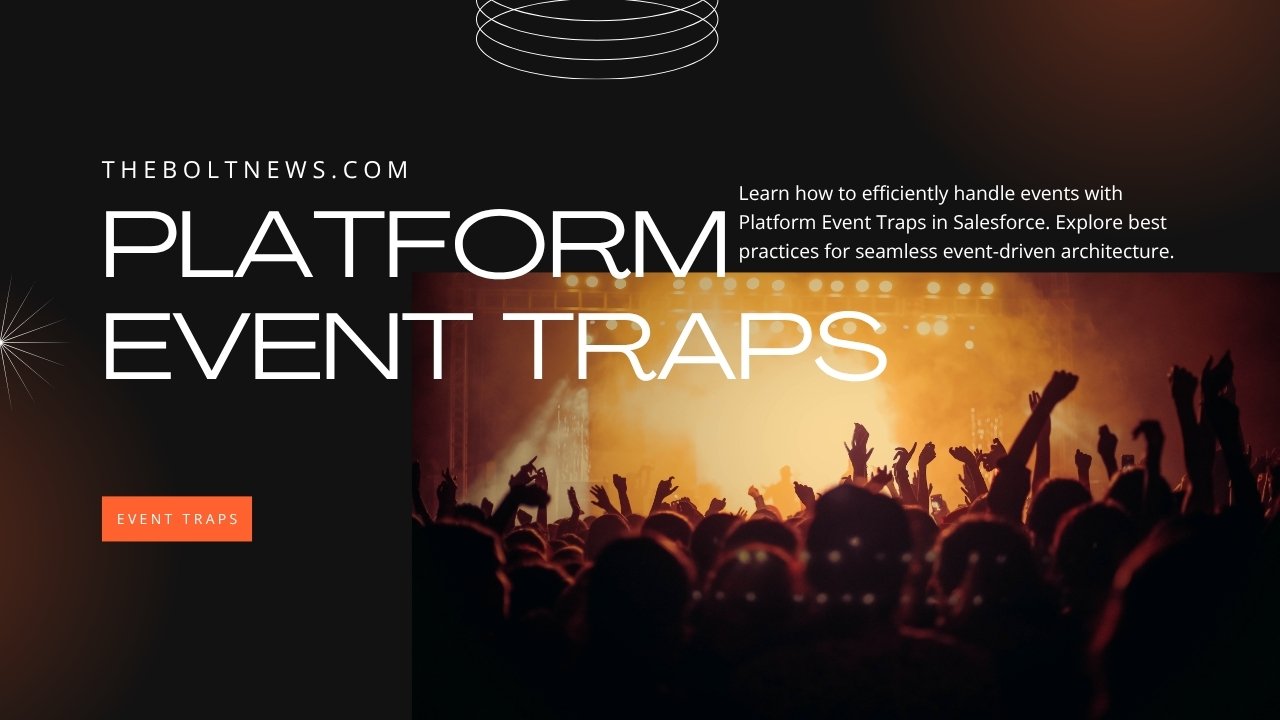In the fast-paced world of modern technology, staying ahead means adopting new strategies that streamline operations. Enter Platform Event Traps—a powerful tool in event-driven architectures that can transform how your organization handles events. Imagine a system where data flows seamlessly, and every trigger is managed efficiently, leading to increased productivity and reduced latency.
Whether you’re looking to enhance customer experiences or optimize backend processes, understanding Platform Event Traps is key. These mechanisms allow for the smooth management of real-time events across different systems. Dive into this guide as we explore what Platform Events are all about, why efficient handling matters, and how you can overcome common challenges in implementation. Let’s unlock the full potential of your event-driven architecture together!
What are Platform Events?
Platform Events are a powerful feature in event-driven architectures, enabling real-time communication between various applications. They facilitate the exchange of data and information across different systems seamlessly.
Think of them as messengers that carry important updates or notifications. These events can trigger processes, update records, or initiate workflows without requiring direct integration between systems.
Built on a publish-subscribe model, Platform Events allow multiple subscribers to listen for specific messages. This flexibility enhances scalability and responsiveness in your system.
Developers can define custom events tailored to their business needs. By utilizing these specialized events, organizations can streamline operations and improve overall efficiency. The ability to handle high volumes of transactions makes them ideal for dynamic environments where timely responses are crucial.
Integrating Platform Events into your architecture opens up new possibilities for automation and innovation while ensuring reliable communication channels within your organization’s ecosystem.
The Importance of Efficient Event Handling
Efficient event handling is crucial in today’s fast-paced digital environment. As businesses increasingly rely on real-time data, the speed and accuracy with which events are processed can significantly impact overall performance.
When events are handled efficiently, organizations can respond promptly to customer needs. This responsiveness enhances user satisfaction and builds loyalty over time.
Moreover, optimized event processing reduces system strain. This means fewer resources consumed and lower operational costs. When systems run smoothly, teams can focus on innovation rather than troubleshooting.
Additionally, efficient handling minimizes latency issues. Delays in processing can lead to missed opportunities or incorrect data interpretations.
Prioritizing effective event management leads to informed decision-making backed by timely information. Adopting best practices ensures that companies stay competitive while navigating the complexities of an ever-evolving landscape.
Common Challenges with Platform Event Handling
Platform Event handling can be a powerful asset, but it comes with its own set of challenges. One major issue is ensuring data consistency. When multiple events occur simultaneously, maintaining the integrity of each event can become complex.
Another challenge lies in managing throughput. High volumes of events may overwhelm your system if not properly architected. This could lead to delays or missed notifications, which are critical in an event-driven environment.
Scalability also poses a concern. Organizations need to prepare for growth and ensure their platform can handle increased loads without sacrificing performance.
Debugging becomes trickier with asynchronous processing. Tracking down issues requires specialized tools and methods that aren’t always straightforward to implement or use effectively. Each of these hurdles demands careful consideration during setup and ongoing management to truly harness the potential of Platform Event Traps.
Best Practices for Setting up Platform Event Traps
When setting up Platform Event Traps, clarity is key. Start by defining the purpose of each event. This ensures every team member understands the traps’ role in your architecture.
Next, focus on data structure. Use a well-defined schema to standardize the events. Consistent formats make it easier for systems to process and react quickly.
Monitoring is another essential practice. Implement robust logging mechanisms to track event flow and identify bottlenecks early on. This proactive approach can save time during troubleshooting.
Also, consider scalability from day one. Design your traps with potential growth in mind so they can handle increasing loads without compromising performance.
Ensure you have proper error handling in place. Gracefully managing failures will prevent disruptions and enhance overall system reliability while maintaining user trust in your applications.
Case Studies: Successful Implementation of Platform Event Traps
Several organizations have successfully harnessed the power of Platform Event Traps to streamline their operations. For instance, a leading e-commerce platform implemented these traps to improve order processing times. By capturing events related to inventory changes in real-time, they reduced delays and enhanced customer satisfaction.
Another notable case involved a healthcare provider that integrated Platform Event Traps for patient data updates. This implementation allowed instant notifications between departments, ensuring critical information was shared without lag. The result? Enhanced coordination and improved patient care outcomes.
A financial services firm also leveraged Platform Event Traps for transaction monitoring. They were able to detect anomalies almost instantly, significantly mitigating risks associated with fraud while maintaining compliance with regulatory standards.
These examples showcase how varied industries can benefit from effectively utilizing Platform Event Traps in their event-driven architectures. Each case demonstrates tangible improvements driven by real-time event handling strategies tailored to specific organizational needs.
Conclusion
Utilizing Platform Event Traps can significantly enhance your organization’s event-driven architecture. By effectively managing and responding to events, businesses can improve their operational efficiency and responsiveness.
These traps allow for seamless integration of various systems and applications, ensuring that data flows smoothly across platforms. This leads to better decision-making and timely responses to customer needs.
Moreover, the ability to handle large volumes of events efficiently helps in minimizing latency issues while maximizing throughput. Organizations implementing these practices often see increased productivity, as teams can focus on strategic initiatives rather than dealing with operational bottlenecks.
Embracing Platform Event Traps not only streamlines processes but also fosters a proactive culture within the organization. As businesses continue to evolve in this digital age, leveraging such tools will be critical for staying competitive and agile in an ever-changing landscape.

